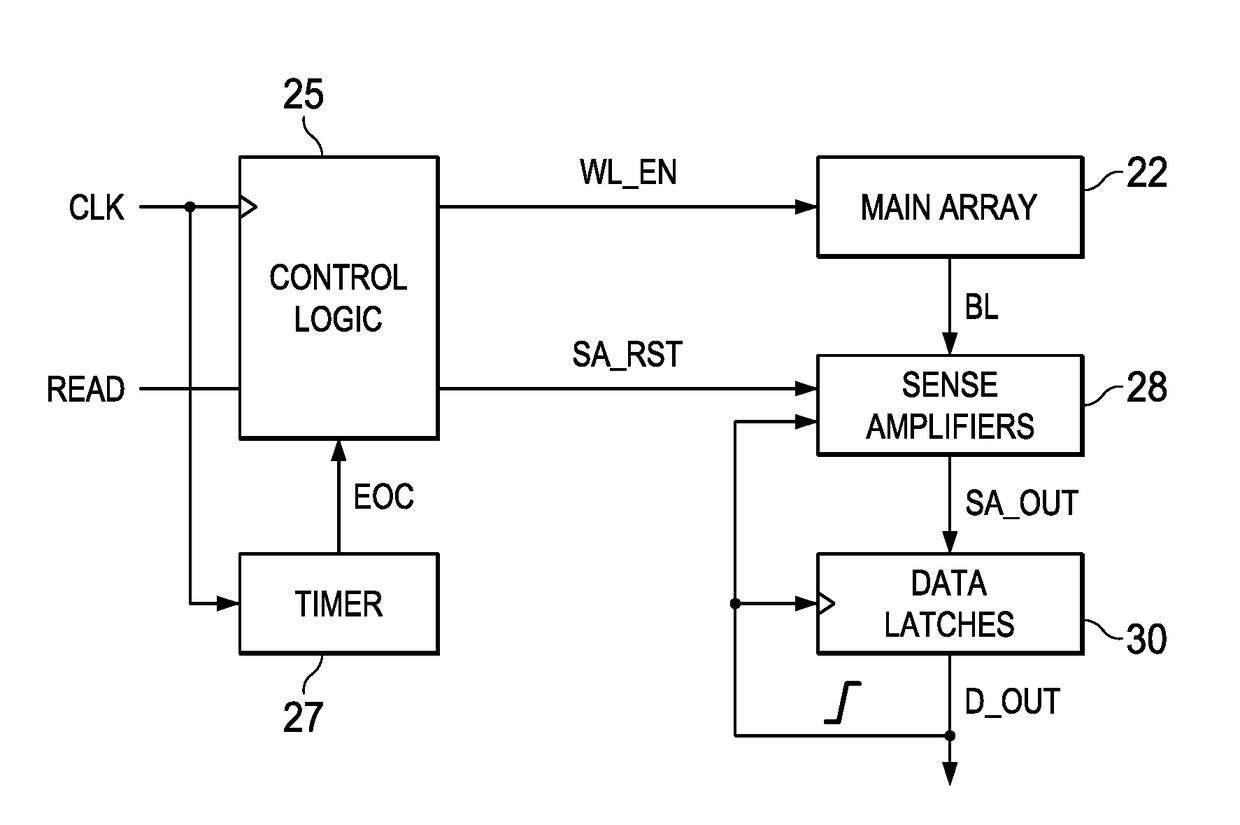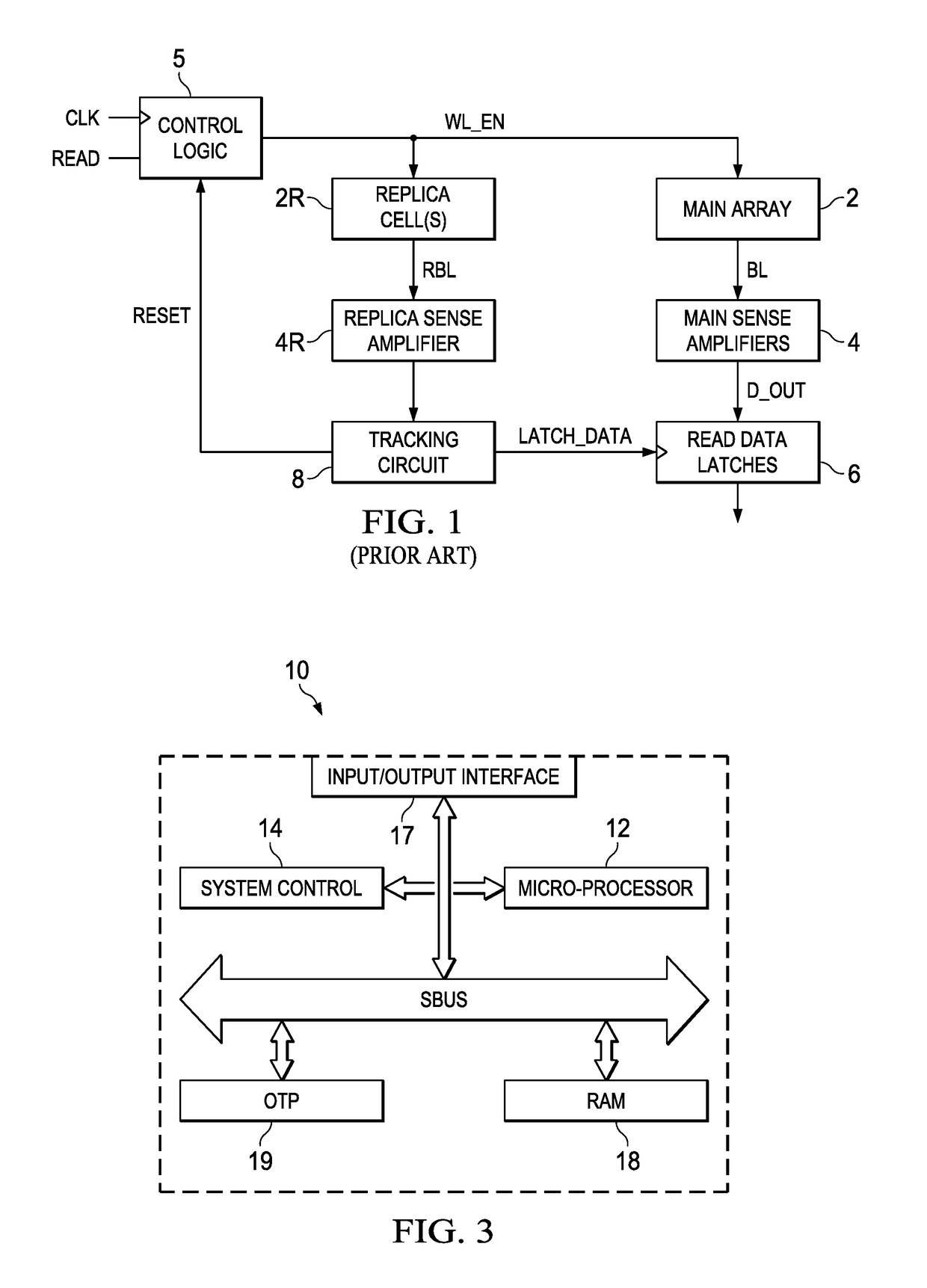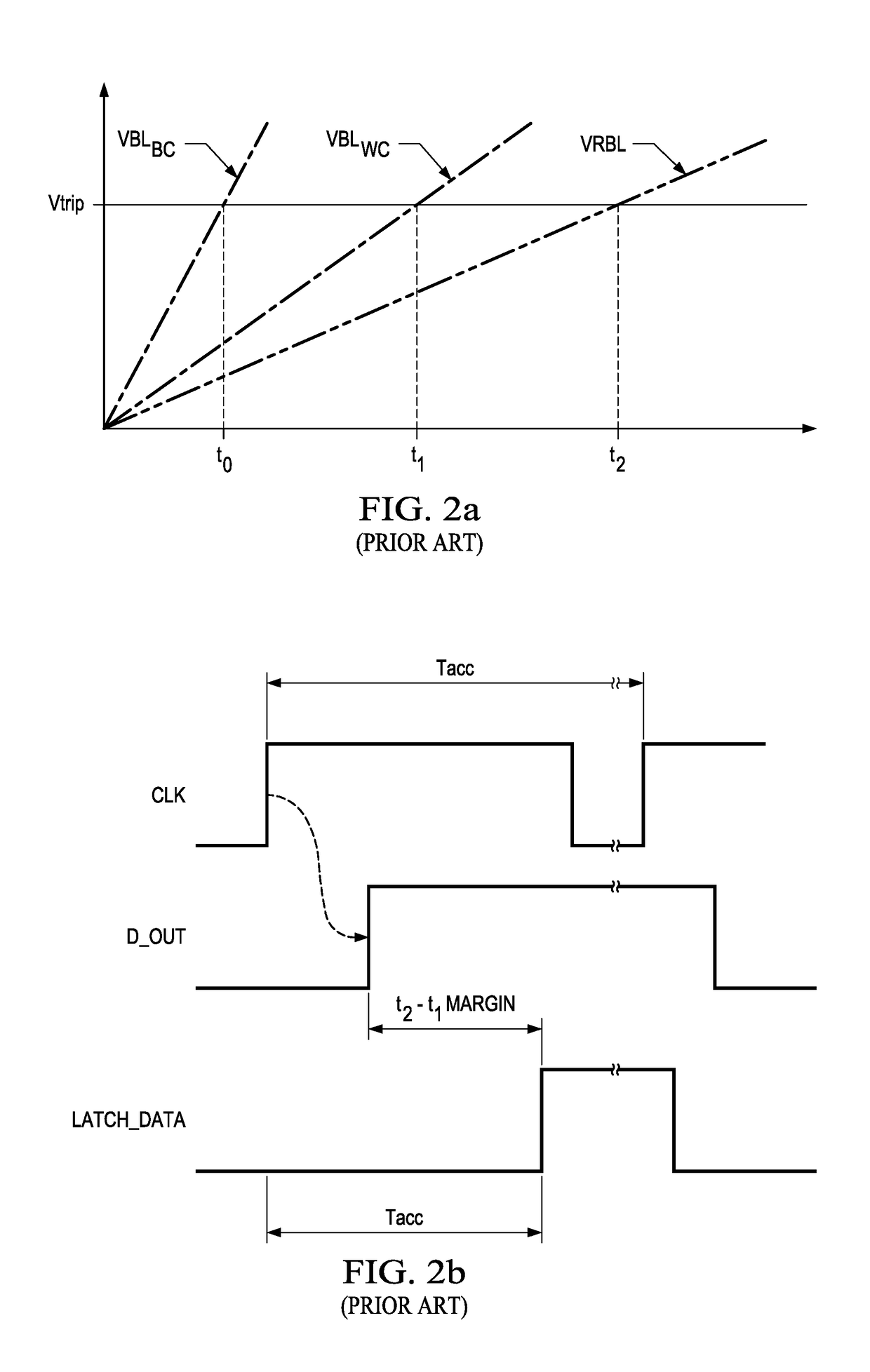Self-Latch Sense Timing in a One-Time-Programmable Memory Architecture
a one-time-programmable memory and self-latch technology, applied in static storage, digital storage, instruments, etc., can solve problems such as limiting device performance, extending the read cycle time, and data read vulnerable to nois
- Summary
- Abstract
- Description
- Claims
- Application Information
AI Technical Summary
Benefits of technology
Problems solved by technology
Method used
Image
Examples
Embodiment Construction
[0035]The one or more embodiments described in this specification are implemented into a one-time programmable (OTP), electrically programmable, read only memory, such as may be implemented into a microcontroller or other large scale integrated circuits, as it is contemplated that such implementation is particularly advantageous in that context. However, it is also contemplated that concepts of this invention may be beneficially applied to other applications, for example stand-alone OTP memory devices, as well as other memory technologies, particularly those for which tracking cells may not match the main memory cells in electrical characteristics and performance. Accordingly, it is to be understood that the following description is provided by way of example only, and is not intended to limit the true scope of this invention as claimed.
[0036]FIG. 3 illustrates an example of large-scale integrated circuit 10 in the form of a so-called “system-on-a-chip” (“SoC”), as now popular in ma...
PUM
 Login to View More
Login to View More Abstract
Description
Claims
Application Information
 Login to View More
Login to View More - R&D
- Intellectual Property
- Life Sciences
- Materials
- Tech Scout
- Unparalleled Data Quality
- Higher Quality Content
- 60% Fewer Hallucinations
Browse by: Latest US Patents, China's latest patents, Technical Efficacy Thesaurus, Application Domain, Technology Topic, Popular Technical Reports.
© 2025 PatSnap. All rights reserved.Legal|Privacy policy|Modern Slavery Act Transparency Statement|Sitemap|About US| Contact US: help@patsnap.com



